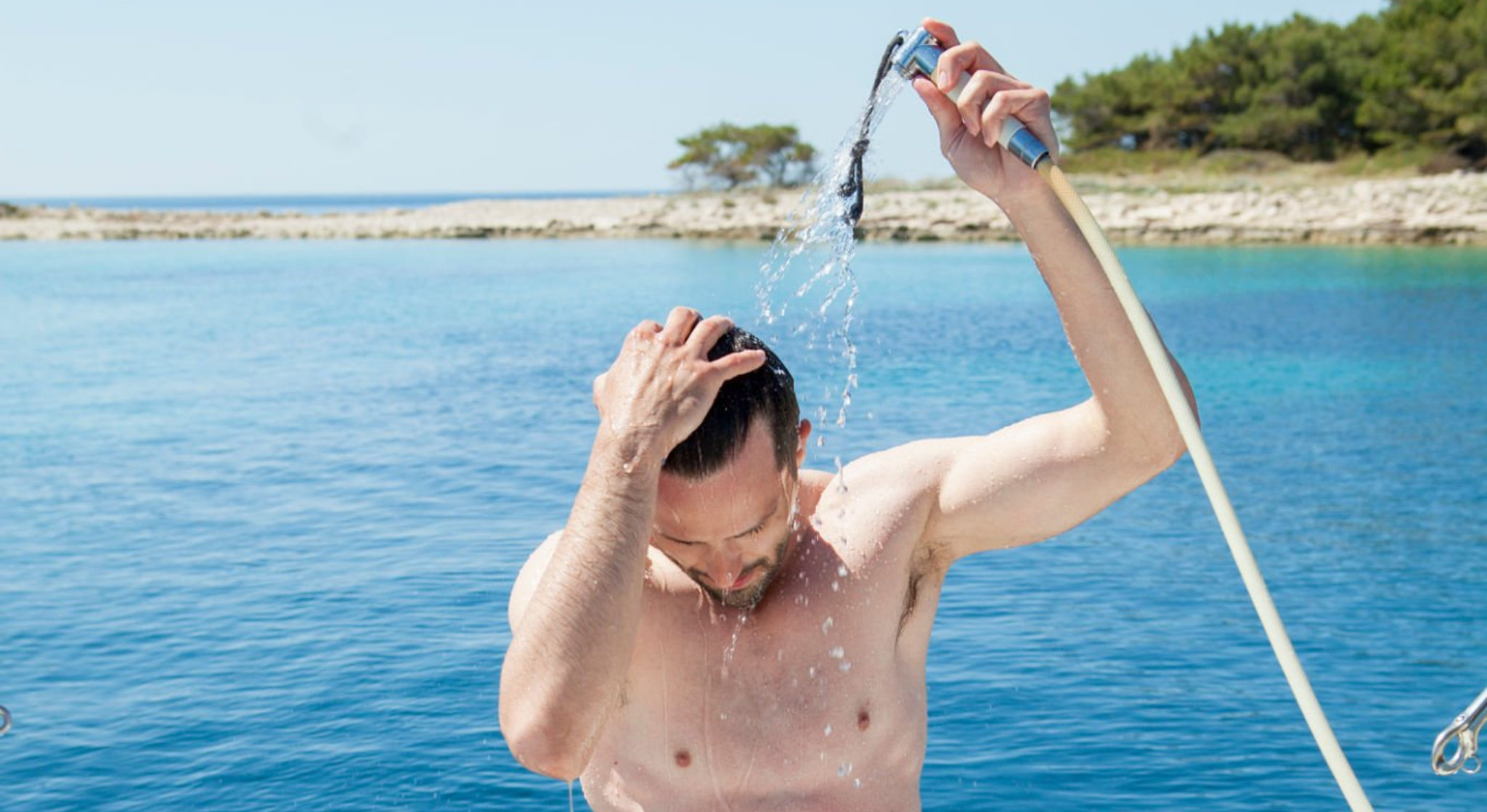The use of water on board
Efficiency and Maintenance of the Water System
The management of fresh water on boats is a world waiting to be discovered and, above all, studied in depth. When we are at home, water seems to flow from our sinks almost by magic: we don't worry about the actual use of this precious and indispensable asset for our lives, which in fact flows generously and without limits. This is not the case, much less on a boat: here the fresh water available is little, in some cases very little. Anyone who wants to best manage this asset in the midst of the waves must create a water system that is perfectly efficient and suited to their needs, and must also be able to carry out perfect ordinary maintenance. It is therefore essential to know your water system from top to bottom, from the water tank to the sink, passing through the pipes and the autoclave pump.

|
Another solution is a bathroom with a shower separated by a curtain |
Fresh water tank
The water system of a boat obviously starts from its water tank, where the boat's precious reserve of fresh water resides. To understand how large your boat's tank should be, you need to calculate the need for fresh water on board. As a general rule, it is essential to calculate at least 5 or 6 liters of fresh water per day for each person on board.
The fresh water tanks are available in different models and capacities, from a few tens of liters to over 3000 and allow you to have a reserve of fresh water for the most varied needs on board, from the kitchen to the shower, but also for washing occasional blanket. Generally the fresh water tank is built with non-toxic materials which guarantee the drinkability of the water, therefore do not release toxic substances and avoid the formation of algae or mould. They are equipped with an inspection cap to allow internal cleaning.
However, in the face of the global water emergency, we can strive to navigate in an even more sustainable way and reduce waste and consumption of fresh water to a minimum. Just put some simple strategies into practice:
- Use salt water
For example, sea water can be used in all sinks on board with special foot pumps next to the fresh water. In this way you will considerably save fresh water supplies, you will be more independent and you will be able to stay away from ports and marinas for longer. Basically, the toilet sucks water from the sea to reduce fresh water. Furthermore, there are marine soaps for washing with sea water.
- Keep track of how much water you use
The boats do not have appliances that use fresh water automatically. Most of the on-board toilets are pump-operated and use sea water, which allows the quantity of water actually used to be precisely quantified and the respective consumption to be kept under control. This also applies to saving drinking water; do not give crew unlimited access to bottled water. One way is, for example, to stow the available bottles in a locker so that you can easily see what is being used.
A smart way to limit fresh water consumption on board is to lower the pump pressure so that all taps flow more slowly. The same can be done with bathroom flushes and shower heads. It is a misconception that high-pressure water is necessary to clean stubborn dirt and grease from dishes. It is actually more effective to use a wide stream of water rather than a large volume of water.
- Equip yourself with a watermaker
This appliance is capable of effectively transforming sea water into drinking water through the reverse osmosis process. A watermaker allows great autonomy and makes life on board much more comfortable and economical. The capacity of watermakers varies from 75 to 90 liters (20-24 gallons) per hour depending on the model.
It is important to point out, however, that watermakers work well when used according to the manufacturer's guidelines; if mishandled, there is a great risk that the watermaker will stop and break during the rental. Be sure to read the user manual before starting the watermaker. Additionally, watermakers cannot be used safely in marinas, where there is more likely to be a higher concentration of fuel and spilled oil.

We offer a wide choice of sailing boats for rent, and we pay more attention to water consumption on board. View our boats and destinations: https://www.bebluesailing.com/it/noleggio









